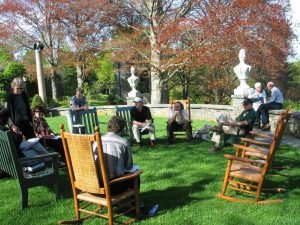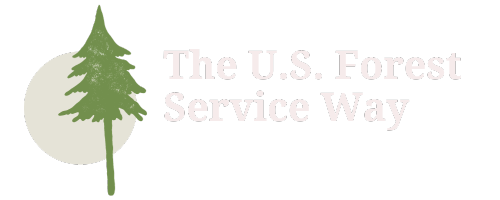My move to Grey Towers felt like coming home from the front lines. I was suffering from traumatic shock syndrome, the Forest Service version. But my inflated ego had a difficult time shifting gears from leading a large organization with tremendous deference from 300 employees. I now was supervising 15 people. I had no personal assistant whose mission was to help me do my job, screening calls, making sure I had what I needed that day, remembering all my appointments. When I drove through town in a Forest Service vehicle, I got arm cramps from waving to friendly people who loved the Forest Service. There was pride in their favorite son, Gifford Pinchot, the founding Chief of the Forest Service. Many disliked the National Park Service. That’s a whole other story. What a turnabout it was.
At Grey Towers, I found a new mentor, Dr. William M. Klein, Chairman of the Board of the Pinchot Institute. Bill was Director of the Morris Arboretum at the University of Pennsylvania. He was a graduate of Colorado State University in range science and had a passion for the Forest Service. Bill had taken the Morris Arboretum and made it sing and dance. I wanted Grey Towers to symbolize the agency’s commitment to stewardship. I wanted its restoration and use to be a metaphor for how the agency dealt with management and use of the National Forests and Grasslands, to be used for the benefit of the current generation and preserve the essential character in perpetuity. It would be both a metaphorical and physical embodiment of the agency’s commitment to ecosystem management.
I also wanted to do something at Grey Towers to help my fellow Forest Supervisors while they were in the job. I believed in the concept the agency adopted- Leaders Growing Leaders. I asked myself the same question Kotter asked: What do leaders really do? Could we do for the organization what a few Forest Supervisors did for me while on the Flathead? Can I define and recognize the behaviors and traits that appear to help Forest Supervisors be successful Forest Supervisors? Piggyback on the men and women who have changed an organization’s culture – its rules of behavior, spoken and unspoken, its traditions, its beliefs?
An organization’s culture is incredibly resistant to change. In part, resistance to change provides stability and keeps organizations from degrading into chaos. But change is inevitable. I am a believer in change through evolution, not revolution. Fortunately, for most of its history, change was mostly incremental in the Forest Service.
Forest Supervisors typically face a tidal wave of criticism and judgment. It seems so much of this, maybe almost all, is focused on fault finding and pointing out perceived failures. Often it seems to be more about the critic making themselves appear important, or powerful, or smart. Unfortunately, as a society, we often buy into these assertions.
My approach was to summarize research findings that I believe have relevance for the Forest Supervisor. What was Gifford Pinchot’s influence as the founder? Where did this start? Why and how is the Forest Service different from any other Federal executive agency? What was the effect of Pinchot’s unique freedom to pick his own people and policies, a result of what Agriculture Secretary James Wilson had to promise to get Pinchot to take the job? Pinchot wanted the Forest Service to resemble no other agency, to be unique and, I believe, to have moral standing.
It was never about forestry as a science. It was about a moral and ethical crisis that they wanted to fix. Pinchot learned forestry in Europe–France, Germany, Switzerland and by proxy, British Colonial India–all places that practiced “modern scientific forestry.” In its American context, forestry was about protecting natural resources, the fundamental basis for economic growth and social development, and ensuring that these benefits accrued to the American people rather than to a privileged few. In a new nation that had endured unbridled natural resource exploitation for over a century, forestry as conceived by Pinchot, was about meeting the needs of the present generation in ways that preserved the underlying integrity and sustainability of natural systems to support the needs of future generations as well, in perpetuity.
Though Gifford Pinchot himself died in 1946, his former home at Grey Towers continues to represent his spirit and philosophy. Up and coming Forest Service leaders who have participated in leadership programs there describe the influence of the place as almost palpable, and they go forth from there with a sense of inspiration and renewed purpose. I have been “retired” for 18 years, I can look back with less emotion and maybe more objective.
When I go to visit Grey Towers, it still has its magic. It continues to get better, and my guess is that the agency’s leaders have as well.

